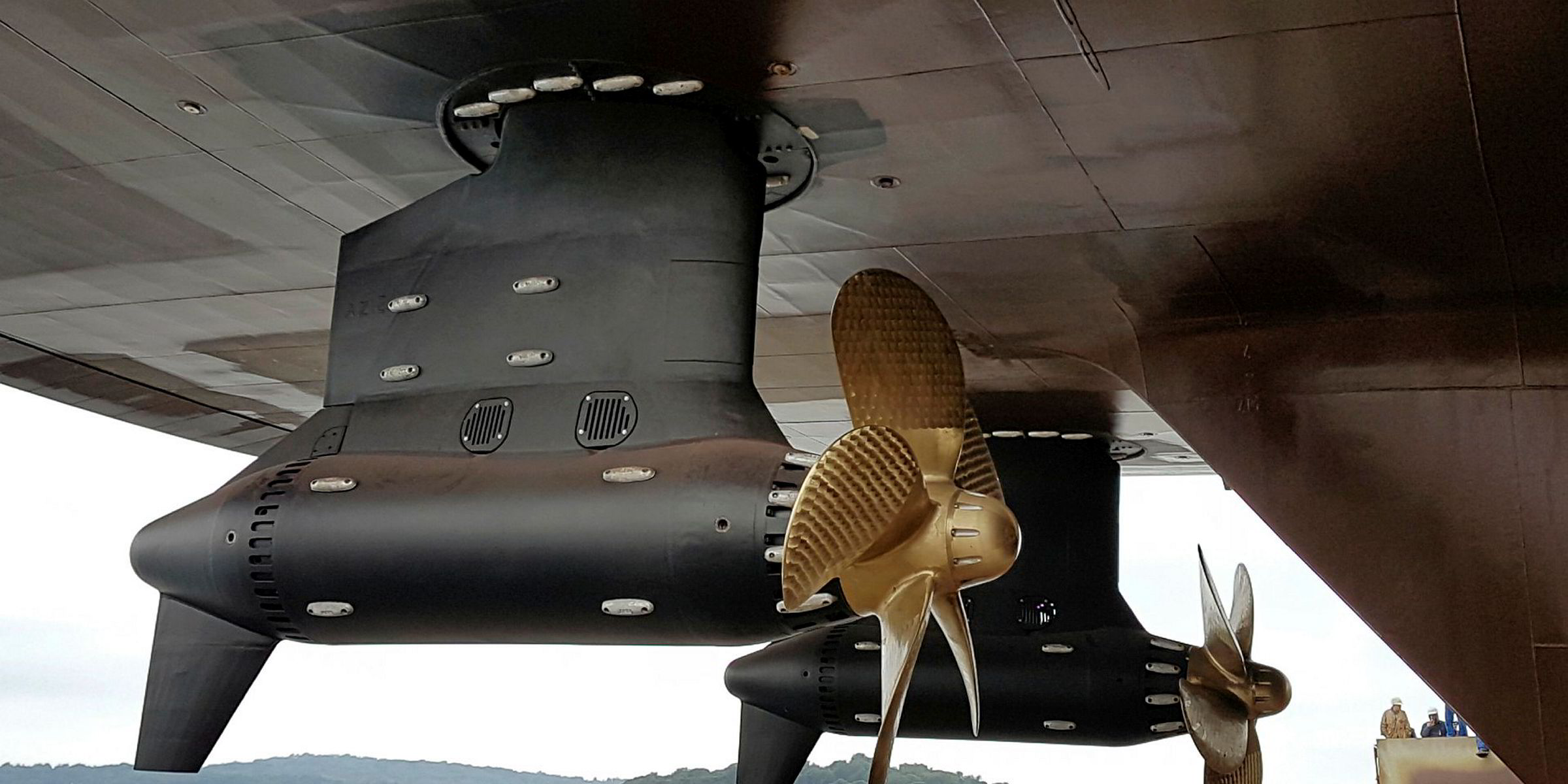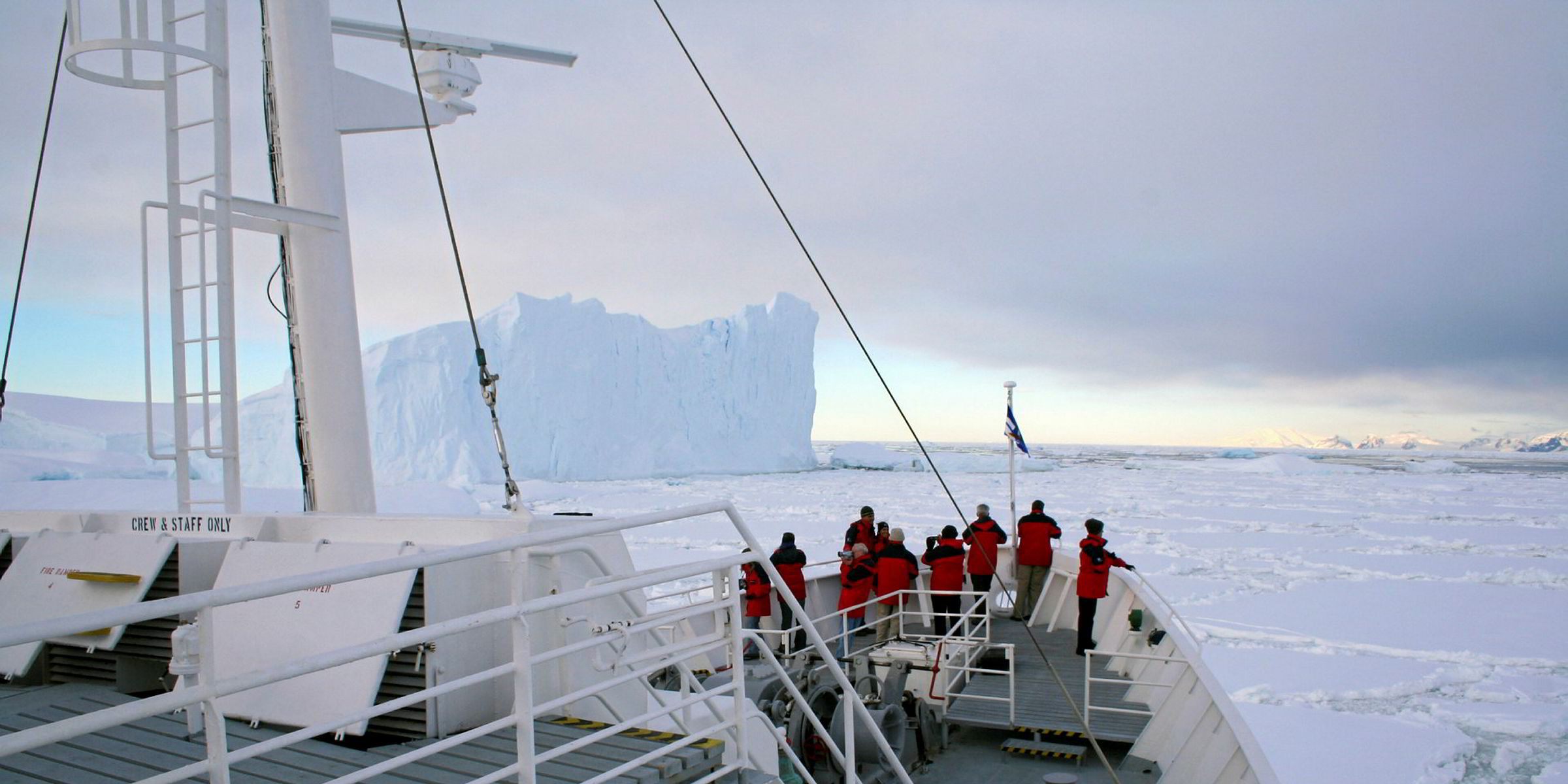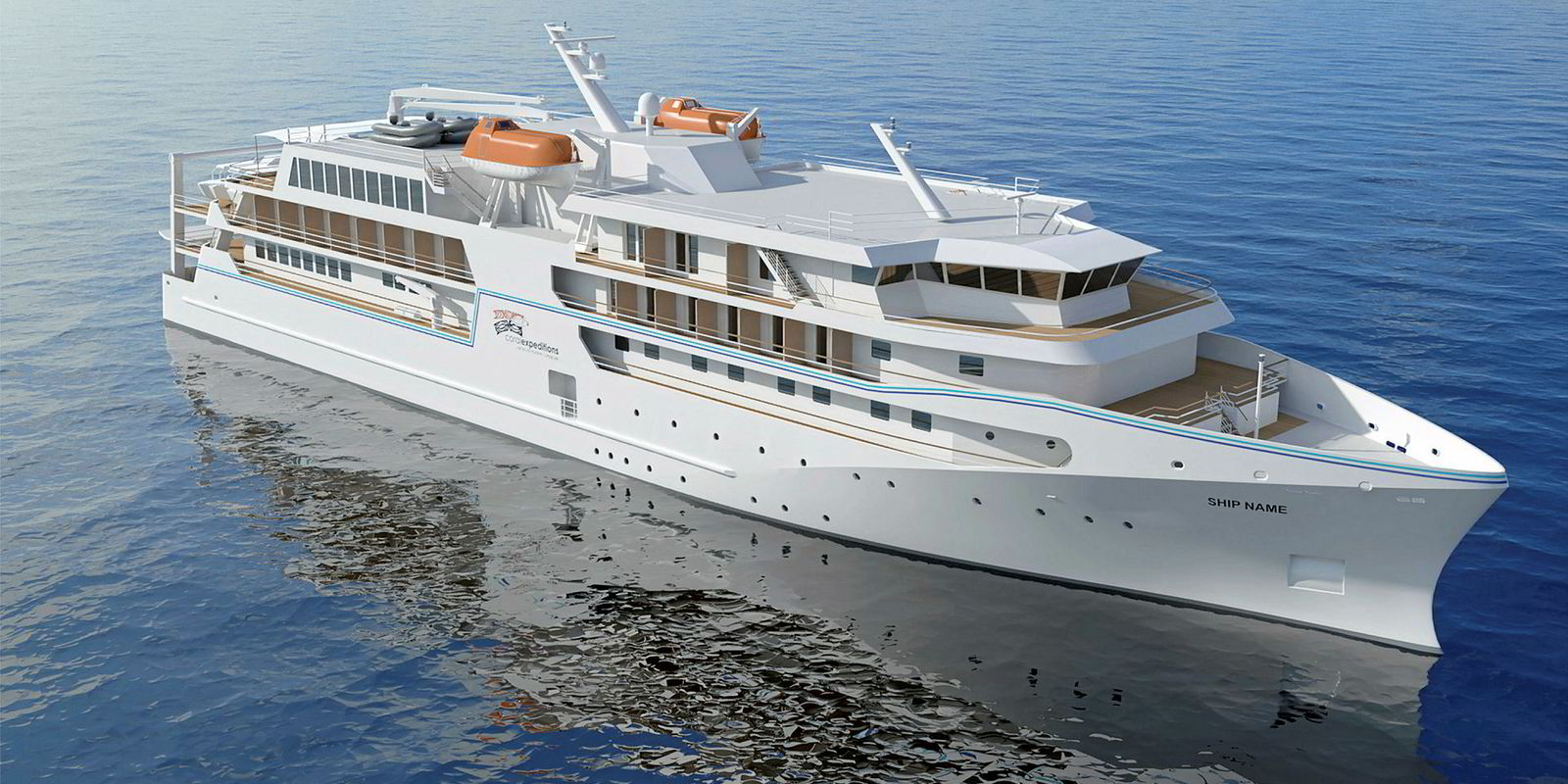A new generation of polar cruiseships is on order, with the most sophisticated equipped and the kind of ice and safety features found on high-tech commercial tonnage operating in Arctic areas.
Expedition or exploration vessels have emerged from being the poor relation of the cruiseship industry to account for a sizeable proportion of the orderbook.
Among the new milestones, France’s Ponant Cruises has ordered a Polar Class 2 cruiseship at Vard with icebreaking capabilities on a par with the 172,600-cbm Christophe de Margerie (built 2016) — the world’s first icebreaking LNG carrier.
The order also marked the 100th cruiseship order for ABB Marine & Ports’ Azipod propulsion units — an alternative to conventional shaft lines and a concept marketed on the basis of providing greater manoeuvrability, lower vibrations, better fuel efficiency and, because emissions are lower, being more environmentally friendly.
The Ponant ship, using pod propulsors, will be the first electric hybrid icebreaker and, as highlighted in TradeWinds’ recent Cruise Shipbuilding business focus, will be capable of exploring areas beyond the reach of all other expedition cruise vessels on order.
Commercial interest is the common denominator driving cruiseship operators to build — mainly in Europe — nearly 30 new vessels able to access polar areas. But, it has brought stricter regulations in terms of safety.
Bernt-Aage Ulstein, director of design and engineering at Norway’s Ulstein Design & Solutions, notes that this has triggered technical innovations. But no single development is responsible for the recent surge of shipbuilding contracts.
Much of the technology has been around for a long time, given the history of icebreakers. The double-action hull design of icebreaking tankers was pioneered in the early 2000s by the 106,200-dwt Tempera (built 2002) and sistership Mastera (built 2003), operated by Finland's Neste.

Designed in collaboration with Stirling Design International, Aker Arctic and Vard, the 150-metre Ponant cruiseship will also have a hull form allowing it to break ice by running astern, just like the Mastera and Tempera.
However, most of the expedition cruiseships on order are of a much lower polar class, normally 6 or 7. These ships fall into what the IMO calls Category B vessels, whereas polar classes 1 to 5 are Category A.
Polar Class 1 allows year-round operation in all polar waters, whereas Polar Class 7 is for summer and autumn operation in thin, first-year ice.
Polar code
SunStone Ships’ series of up to 10 expedition cruiseships at China Merchant Industry Holdings will have a Polar Class 6 notation under the IMO’s International Code for Ships Operating in Polar Waters (Polar Code).
But these vessels will benefit from the owner building them to meet the Safe Return to Port (SRP) standards of the International Convention for the Safety of Life at Sea (Solas).
SunStone Ships president and chief executive Niels-Erik Lund says SRP is “clearly needed for smaller vessels” and he believes it is wrong not to be obligatory for vessels less than 120 metres. However, not all operators have made the same investment.
SRP basically means doubling up on all main equipment and locating it in two different fire zones.
“Based on this, you will have two completely independent engine rooms, a standard bridge and an emergency bridge, separate sewage treatment plants, water tanks and pumps, as well as two separate food preparation and serving areas, etc,” Lund says.
“This is to ensure that even with a major fire or breakdown of some main equipment, the vessel will still be able to return to port and provide basic passenger services such as toilets, showers, food and air conditioning/heating, etc.
“That comes into effect this year on all existing vessels, as well as all newbuildings and includes vessels’ physical condition, all safety equipment and gear, as well as the manning and training of the crew.”
Ulstein says it was the IMO’s awareness of increased marine operations, including polar cruise traffic, that led it to take steps to secure the safety of passengers and crew with the Polar Code.
In categorising vessels, ranging from those operating in largely first year ice to those operating year-round, the Polar Code differentiates between hull and propeller ice-strengthening. The higher the ice class, the earlier and longer the cruise season for operators in polar areas.
Ulstein Design & Solutions is delivering and supervising the complete European-sourced technical package for the SunStone newbuildings in China, which will feature the Ulstein X-Bow hull, with its innovative inverted bow.
The design is intended to allow smoother passage through rough seas to reach areas in the Arctic and Antarctica.

Bernt-Aage Ulstein notes that the main crossing to see wildlife in Antarctica takes ships from Ushuaia, in southern Argentina, across the Drake Passage.
Whales, dolphin, albatrosses and penguins can be seen en route, but high winds and rough seas has earned it the nickname the Drake Shake.
In the north, cruiseships visiting Iceland or Svalbard cross the challenging Norwegian Sea from Kristiansund or Tromso.
Ulstein says the X-Bow generates less spray when hitting the waves, consequently reducing the risk of ice forming on vessels.
It also has a simple, geometrical hull which improves its strength and gives it less resistance to waves.
Ulstein Design & Solutions contacted classification society DNV GL when it decided to look at expedition cruiseships and was told that the biggest test would be SRP, applicable to new passengerships with keels laid on or after 1 July 2010 and with three or more main vertical zones.
Terje Vage, Ulstein Design & Solutions’ manager for naval architecture, says SRP is the most important safety regulation to preserve basic ship functionality in the event of an incident. Some owners have used it as a marketing tool for selling cruises.
The key concept behind SRP is that it should be safer for passengers to remain onboard, rather than use lifeboats, because of high equipment redundancy and a vessel’s ability to return to port even if there is an engine-room fire.
Typically, expedition cruiseships have three or four zones, each a maximum of 48 metres, and the ship must remain operational if one of these zones is hit by fire.

It means 13 or 14 systems must remain functional in an accident, including fuel, communications and sewage, as well as preserving habitability of the passengers.
Personal survival kits must be stored onboard for use if passengers and crew have to abandon ship. But Vage says SRP does not specify the contents or where they have to be stored.
Typical sites include in cabins, close to lifeboats and in the inflatable boats used to ferry passengers to sightseeing locations.
He adds that owners frequently also want to see 100% lifeboat capacity for passengers. Solas requires a minimum of 75% in lifeboats and the rest in life rafts.
Larger cruiseships may have lifeboats for 150 people or even larger. But on smaller expedition vessels, a Solas standard 80-person lifeboat may have a capacity of only 60 people because of space being taken up by personal safety equipment, extra clothing, blankets and provisions.
Classification societies have recommended there should also be toilets on lifeboats.
Vage also highlights the importance of using waste heat from the engines and exhaust to generate hot water, and even fresh water, on expedition cruiseships.





